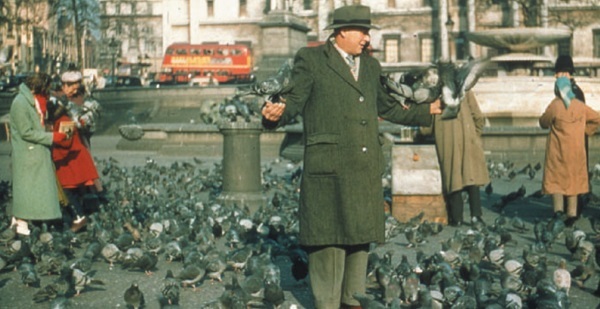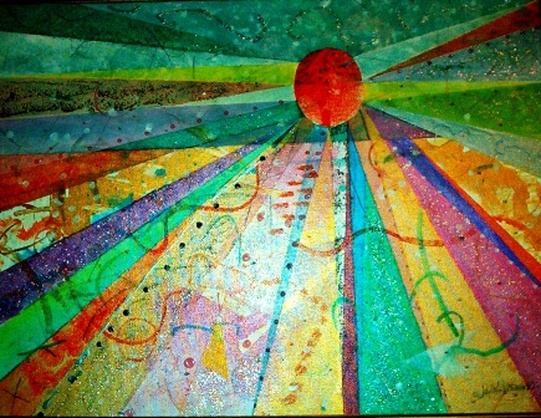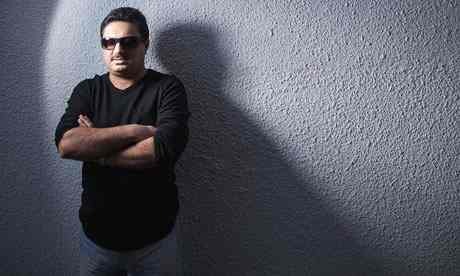Molinho's task: to completely restore sight to the blind interferes with the brain
“If a person born to a blind person can by touch distinguish the shapes of objects, such as a sphere and a cube, can he, having acquired the ability to see (but without the help of touch), identify these objects only by means of vision, correlating them with his tactile representation? ”That is the task of Molinho, a thought experiment formulated in 1688. Both William Molyneux and John Locke, in a letter to which he described this problem, tended to a negative answer.

A sighted person gets a significant part of the information thanks to his eyes. Often we consciously “deprive” one of the organs that are useful for orientation in space - we plug our ears with headphones and listen to music, having fun. A person who has lost his sight at a conscious age continues to think in the usual categories for a sighted person - he presents pictures of what is happening, the brain creates them from information received from other organs. Those who were born blind see the world differently. If a person who has lost his sight presents a rest on the sea, “having seen” water and a sandy beach, then a person who is blind from birth will feel sand between his fingers and a breeze on his skin, he will hear the sound of waves. Even after the restoration of vision, the brain of these people is not immediately able to perceive certain objects and phenomena.
English surgeon and teacher William Cselden, who lived in 1688-1752, invented a method of surgical creation of an artificial pupil for the treatment of some forms of blindness. In 1728, he published a report on the cure of a 13-year-old gentleman, blind from birth, from cataracts. When the boy first saw, he quickly figured out the flowers and called the scarlet his favorite. The black color seemed strange and "indefinite" to him. But the boy could not judge the distance between himself and the objects, could not distinguish one thing from another and recognize the shapes of objects. This was the first confirmation that the problem of Molineu has a negative answer.
')
Sydney Bradford, born in 1906, lost his sight at the age of 10 months. Thanks to a cornea transplant at the age of 52, Bradford received vision. Immediately after the operation, he realized how much time the clock showed. He easily determined the distance to objects in the room in which he had previously been without the ability to see objects. But the new world, full of color and movement, intoxicated Bradford. He was afraid of things that he was not able to understand, did not recognize people and objects, which he perceived only by touch. Prior to surgery, Bradford worked as a shoemaker, and continued to work in the same place after receiving his vision - but with his eyes closed. Only in this way could he identify the tools.

Sydney bradford
Michael May , who was blind from three years old because of kerosene poured over his eyes, returned his eyesight at only 43. By that time, he was the world record holder in high-speed slalom skiing among the blind. He was always a sports guy, played football, received a master's degree in international affairs at Johns Hopkins University, became the head of the Sendero Group, a company engaged in GPS for the blind. And after receiving the view in 1999, he could not recognize his wife. His eyes after the operation, that is, the "iron" itself, should have given him perfect vision. But the brain could not process information the way sighted people handle it. One day while skiing down a mountain, he realized that at high speed he was approaching a huge object and could no longer drive around it. It turned out it was a shadow. He continues to use the cane, and calls himself a "blind man with a vision."

Michael may
About the next character, Shirle Jennings, in 1999, they shot the film "At First Sight" with Val Kilmer in the title role. By the age of ten, due to the many diseases he had suffered in his life, he could only distinguish light from darkness. After the operation, it was very difficult for him to match the objects he saw with those he touched. After he was given back his lost eyesight at an early age, he became an artist .

Shirle Jennings Painting
The people we talked about became blind at the age of ten. What happens if a person loses his sight at a more conscious age? Shander, Hérian ceased to see by the age of 14. He writes that when a person is blind, he imagines what others look like. Not touching the face or appreciating height, but by voice and character. Herian studied, worked, married the woman he loved. Ten years after the wedding, he first saw his wife. The moment he opened his eyes, he immediately recognized her: “I see you” - these are his first words after the operation.

Shander Herian
People who are blind from birth or from an early age and received a conscious age do not understand why objects moving away from them become smaller. This perception develops in the brain as we grow. To understand it is much more difficult. People show agnosia - they are able to describe the signs of objects, but they cannot fully recognize the object. They find it difficult to recognize people by their faces, including themselves in the mirror.
Restoration of vision sometimes plays a cruel joke. Michael May, after receiving the view, continued to use the cane, Sidney Bradford was disappointed with what he saw: after the operation, he was attracted to bright colors, but the world mostly consisted of more dull tones. In just two years of seeing life, his body was exhausted, after which he died.
On the other hand, Shirle Jennings, having received his vision, was able to become an artist. Despite the difficulty for a blind person to understand the depth and display three-dimensional objects on a plane, his brain was able to adapt sufficiently so that he began to engage in visual arts.
The cases described above show that the Mollinho Task has a negative answer. Immediately after receiving the vision, the former blind will not determine the ball and the cube, and only after some time the brain will correlate visual and tactile information with a high degree of probability. Of course, a lot here depends on age: children from India had more chances for full processing of visual information by the brain than a 52-year-old shoe repairman.
A 2014 study from the University of Montreal confirms this. Specialists with the help of MRI traced the work of the brain of a 50-year-old woman before and after surgery to implant an artificial cornea. Eye surgery leads to a positive result even in adulthood after a lifetime of total blindness. But there is an important nuance - the brain, accustomed to relying on hearing, continued to process sound signals in the visual cortex even seven months after surgery. People who have lost their eyesight even for several months, including due to accidents or diseases, are unlikely to restore full-fledged vision due to irreversible changes in the structure of the visual centers of the brain. Like the skier Michael May, during the normal operation of the hardware, the “software” did not allow the patient to see clearly.

A sighted person gets a significant part of the information thanks to his eyes. Often we consciously “deprive” one of the organs that are useful for orientation in space - we plug our ears with headphones and listen to music, having fun. A person who has lost his sight at a conscious age continues to think in the usual categories for a sighted person - he presents pictures of what is happening, the brain creates them from information received from other organs. Those who were born blind see the world differently. If a person who has lost his sight presents a rest on the sea, “having seen” water and a sandy beach, then a person who is blind from birth will feel sand between his fingers and a breeze on his skin, he will hear the sound of waves. Even after the restoration of vision, the brain of these people is not immediately able to perceive certain objects and phenomena.
English surgeon and teacher William Cselden, who lived in 1688-1752, invented a method of surgical creation of an artificial pupil for the treatment of some forms of blindness. In 1728, he published a report on the cure of a 13-year-old gentleman, blind from birth, from cataracts. When the boy first saw, he quickly figured out the flowers and called the scarlet his favorite. The black color seemed strange and "indefinite" to him. But the boy could not judge the distance between himself and the objects, could not distinguish one thing from another and recognize the shapes of objects. This was the first confirmation that the problem of Molineu has a negative answer.
')
Sydney Bradford, born in 1906, lost his sight at the age of 10 months. Thanks to a cornea transplant at the age of 52, Bradford received vision. Immediately after the operation, he realized how much time the clock showed. He easily determined the distance to objects in the room in which he had previously been without the ability to see objects. But the new world, full of color and movement, intoxicated Bradford. He was afraid of things that he was not able to understand, did not recognize people and objects, which he perceived only by touch. Prior to surgery, Bradford worked as a shoemaker, and continued to work in the same place after receiving his vision - but with his eyes closed. Only in this way could he identify the tools.

Sydney bradford
Michael May , who was blind from three years old because of kerosene poured over his eyes, returned his eyesight at only 43. By that time, he was the world record holder in high-speed slalom skiing among the blind. He was always a sports guy, played football, received a master's degree in international affairs at Johns Hopkins University, became the head of the Sendero Group, a company engaged in GPS for the blind. And after receiving the view in 1999, he could not recognize his wife. His eyes after the operation, that is, the "iron" itself, should have given him perfect vision. But the brain could not process information the way sighted people handle it. One day while skiing down a mountain, he realized that at high speed he was approaching a huge object and could no longer drive around it. It turned out it was a shadow. He continues to use the cane, and calls himself a "blind man with a vision."

Michael may
About the next character, Shirle Jennings, in 1999, they shot the film "At First Sight" with Val Kilmer in the title role. By the age of ten, due to the many diseases he had suffered in his life, he could only distinguish light from darkness. After the operation, it was very difficult for him to match the objects he saw with those he touched. After he was given back his lost eyesight at an early age, he became an artist .

Shirle Jennings Painting
The people we talked about became blind at the age of ten. What happens if a person loses his sight at a more conscious age? Shander, Hérian ceased to see by the age of 14. He writes that when a person is blind, he imagines what others look like. Not touching the face or appreciating height, but by voice and character. Herian studied, worked, married the woman he loved. Ten years after the wedding, he first saw his wife. The moment he opened his eyes, he immediately recognized her: “I see you” - these are his first words after the operation.

Shander Herian
People who are blind from birth or from an early age and received a conscious age do not understand why objects moving away from them become smaller. This perception develops in the brain as we grow. To understand it is much more difficult. People show agnosia - they are able to describe the signs of objects, but they cannot fully recognize the object. They find it difficult to recognize people by their faces, including themselves in the mirror.
Restoration of vision sometimes plays a cruel joke. Michael May, after receiving the view, continued to use the cane, Sidney Bradford was disappointed with what he saw: after the operation, he was attracted to bright colors, but the world mostly consisted of more dull tones. In just two years of seeing life, his body was exhausted, after which he died.
On the other hand, Shirle Jennings, having received his vision, was able to become an artist. Despite the difficulty for a blind person to understand the depth and display three-dimensional objects on a plane, his brain was able to adapt sufficiently so that he began to engage in visual arts.
The cases described above show that the Mollinho Task has a negative answer. Immediately after receiving the vision, the former blind will not determine the ball and the cube, and only after some time the brain will correlate visual and tactile information with a high degree of probability. Of course, a lot here depends on age: children from India had more chances for full processing of visual information by the brain than a 52-year-old shoe repairman.
A 2014 study from the University of Montreal confirms this. Specialists with the help of MRI traced the work of the brain of a 50-year-old woman before and after surgery to implant an artificial cornea. Eye surgery leads to a positive result even in adulthood after a lifetime of total blindness. But there is an important nuance - the brain, accustomed to relying on hearing, continued to process sound signals in the visual cortex even seven months after surgery. People who have lost their eyesight even for several months, including due to accidents or diseases, are unlikely to restore full-fledged vision due to irreversible changes in the structure of the visual centers of the brain. Like the skier Michael May, during the normal operation of the hardware, the “software” did not allow the patient to see clearly.
Source: https://habr.com/ru/post/372479/
All Articles